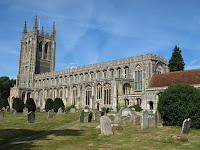 Or, “How Canon ruined the most scenic walking route in Europe”.
Or, “How Canon ruined the most scenic walking route in Europe”. Today was 'the' day: we were walking the Cinque Terre, or 5 Lands. These are 5 villages that are built into clefts in the precipitous rock faces that form the coast of this area of Italy. In the past the only access was by sea and a footpath. Now a train line joins them all, bringing masses of tourists, who come to walk the footpath.
 End to end it is 7 miles (11km) and about 5 hours walking. We decided to walk east to west so took the train from Levanto to Riomaggiore to begin the walk.
End to end it is 7 miles (11km) and about 5 hours walking. We decided to walk east to west so took the train from Levanto to Riomaggiore to begin the walk.The first town, Riomaggiore, is a great introduction to the area. We walked to the marina, checked out the upper town, and then we set of for the 30 minute stroll to Manarola, This is on a super-highway track, clearly designed for the day trippers so that they can go home and claim that they have walked the Cinque Terre.
 We looked around Manarola and then disaster struck. Our 4-month old Canon G10 Powershot failed catastrophically as the CCD receptor stopped working. So here we were, 30 minutes into a 5-hour trek along a beautiful stretch of coastline with colourful villages tumbling down verdant terraced hillsides against an azure blue Mediterranean sea on a gloriously sunny day and we had no camera. “Thank you, Canon” - not!
We looked around Manarola and then disaster struck. Our 4-month old Canon G10 Powershot failed catastrophically as the CCD receptor stopped working. So here we were, 30 minutes into a 5-hour trek along a beautiful stretch of coastline with colourful villages tumbling down verdant terraced hillsides against an azure blue Mediterranean sea on a gloriously sunny day and we had no camera. “Thank you, Canon” - not! With a heavy heart, we trudged on to Corniglia where it was large enough and touristy enough to at least sell cheap horrible disposable cameras.
With a heavy heart, we trudged on to Corniglia where it was large enough and touristy enough to at least sell cheap horrible disposable cameras.The sections from Corniglia to Vernazza and from Vernazza to Monterosso al Mare are designed to 'sort the men from the boys'. The footpath to the east had been quite civilised and did not get too far from sea level, apart from the climb up the 380 steps to Corniglia.
 Corniglia to Vernazza was described as the greenest section of the walk and we were looking forward to seeing the terraced hillsides with their 7000km of stone walls and vineyards and olive groves and so forth. However, a fire on the Sunday before we arrived had reduced great swathes of this section of the hillsides to ash and the footpath had only just been reopened so, in spite of no decent camera, (did I mention Canon are not my favourite company today?) we did feel privileged that after finally making it to the Cinque Terre we were not turned back.
Corniglia to Vernazza was described as the greenest section of the walk and we were looking forward to seeing the terraced hillsides with their 7000km of stone walls and vineyards and olive groves and so forth. However, a fire on the Sunday before we arrived had reduced great swathes of this section of the hillsides to ash and the footpath had only just been reopened so, in spite of no decent camera, (did I mention Canon are not my favourite company today?) we did feel privileged that after finally making it to the Cinque Terre we were not turned back. The highest point on the footpath is between Corniglia and Vernazza but the roughest part of the footpath is the section between Vernazza and Monterosso al Mare. The temperature for the last two sections was in the high 30s so by the time we arrived in Monterosso al Mare at the end of the footpath we were fairly done-in and after exploring the town were quite pleased to collapse on the train for the short ride back to Levanto.
The highest point on the footpath is between Corniglia and Vernazza but the roughest part of the footpath is the section between Vernazza and Monterosso al Mare. The temperature for the last two sections was in the high 30s so by the time we arrived in Monterosso al Mare at the end of the footpath we were fairly done-in and after exploring the town were quite pleased to collapse on the train for the short ride back to Levanto.

More photos of Vernazza are available here by kind courtesy of Young Jee Filer who we met on the trail.











































